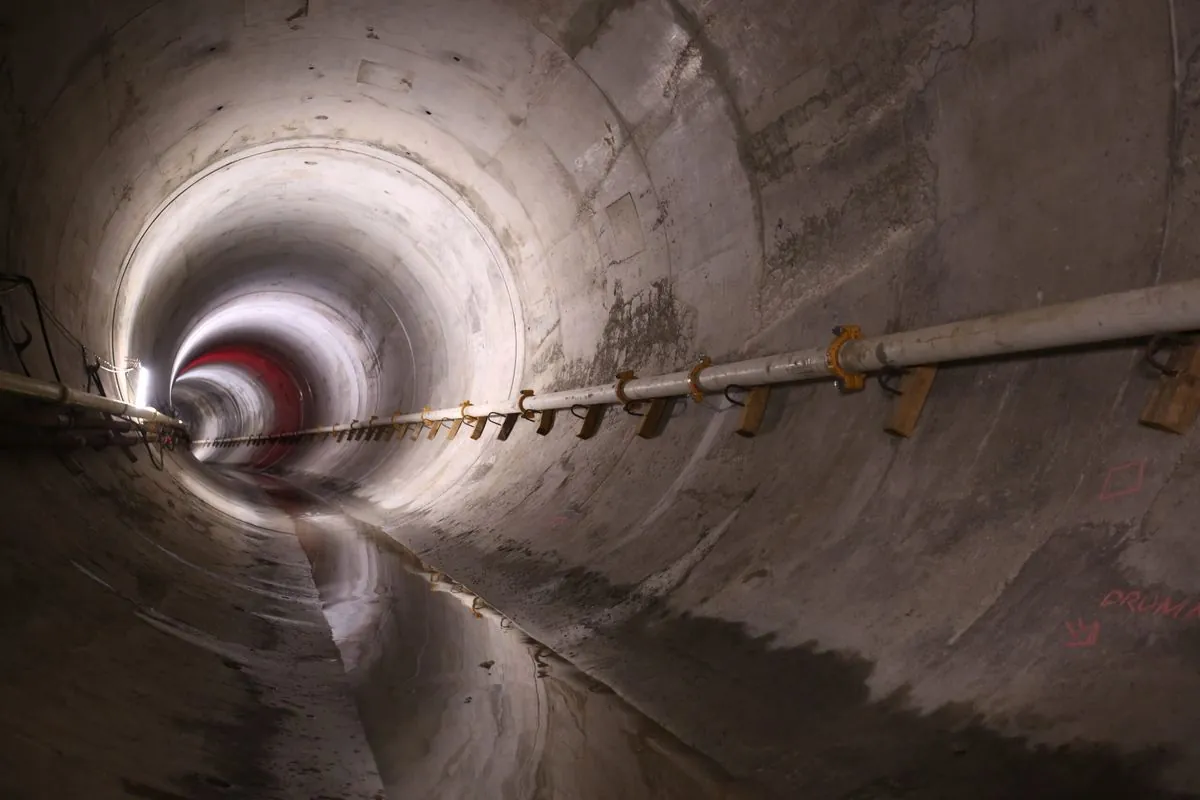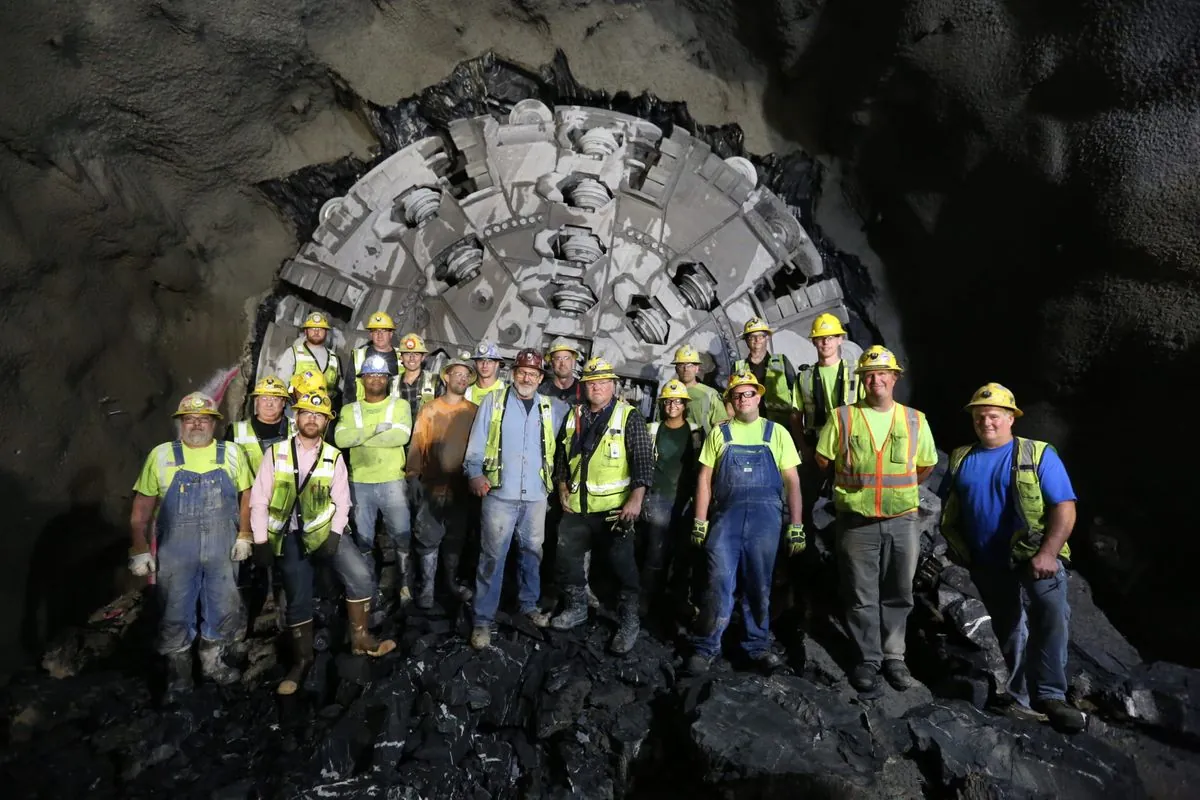NYC's Delaware Aqueduct Shuts Down for $2B Repair Project
New York City's Delaware Aqueduct, supplying half the city's water, begins an 8-month shutdown for a $2 billion leak repair project. Officials assure uninterrupted water supply but warn of potential taste changes.

New York City has initiated a significant infrastructure project, shutting down the Delaware Aqueduct for extensive repairs. This crucial water supply conduit, responsible for delivering approximately half of the city's daily water needs, will be offline for up to eight months as part of a $2 billion initiative to address substantial leaks beneath the Hudson River.
The Delaware Aqueduct, the world's longest continuous tunnel, has been a vital component of New York City's water supply system since 1944. Stretching 85 miles from the Catskill region to reservoirs in the city's northern suburbs, it typically provides about 550 million gallons of water daily to over 8 million residents. This engineering marvel is part of a larger system that serves nearly half the population of New York State, showcasing the scale and importance of the city's water infrastructure.
Despite its critical role, the aqueduct has been plagued by significant leakage issues. Up to 35 million gallons of water escape daily, primarily from a section deep below the Hudson River. To address this problem without disrupting the water supply for years, engineers devised a solution: constructing a 2.5-mile bypass tunnel. This parallel tunnel, which has been under construction for about a decade, will be connected during the current shutdown.

Paul Rush, deputy commissioner for the city's Department of Environmental Protection, assured residents that water would continue to flow uninterrupted from city faucets. However, he noted that the water's composition might change slightly: "We're going to be altering the mix of water that consumers receive."
To compensate for the Delaware Aqueduct's temporary closure, the city has bolstered capacity in other parts of its extensive 19-reservoir system. The Catskill Aqueduct, completed in 1917, will play a more significant role, as will the reservoirs and lakes of the Croton Watershed in the northern suburbs. This system, which includes the oldest part of NYC's water infrastructure dating back to 1842, demonstrates the city's long history of innovative water management.
Rohit Aggarwala, DEP Commissioner, addressed potential concerns about water quality: "While some residents may notice a temporary, subtle difference in taste or aroma during the repairs, changes in taste don't mean something is wrong with the water. Just like different brands of bottled water taste a bit different, so do our different reservoirs."
The timing of this massive undertaking was carefully considered. Officials scheduled the work to avoid summer months when water demand typically peaks. This strategic planning reflects the meticulous approach taken to maintain New York City's water supply system, which is renowned for delivering high-quality, unfiltered drinking water to millions.
The New York City water supply system, managed by the Department of Environmental Protection, is a testament to engineering ingenuity. With over 6,800 miles of water mains and pipes, it relies largely on gravity to transport water from upstate reservoirs to the city. The system's ability to store up to 550 billion gallons of water and deliver about 1 billion gallons daily underscores its immense scale and efficiency.
As the Delaware Aqueduct undergoes this critical repair work, it serves as a reminder of the complex infrastructure that supports urban life. The project not only aims to address current issues but also ensures the longevity and reliability of New York City's water supply for future generations.


































